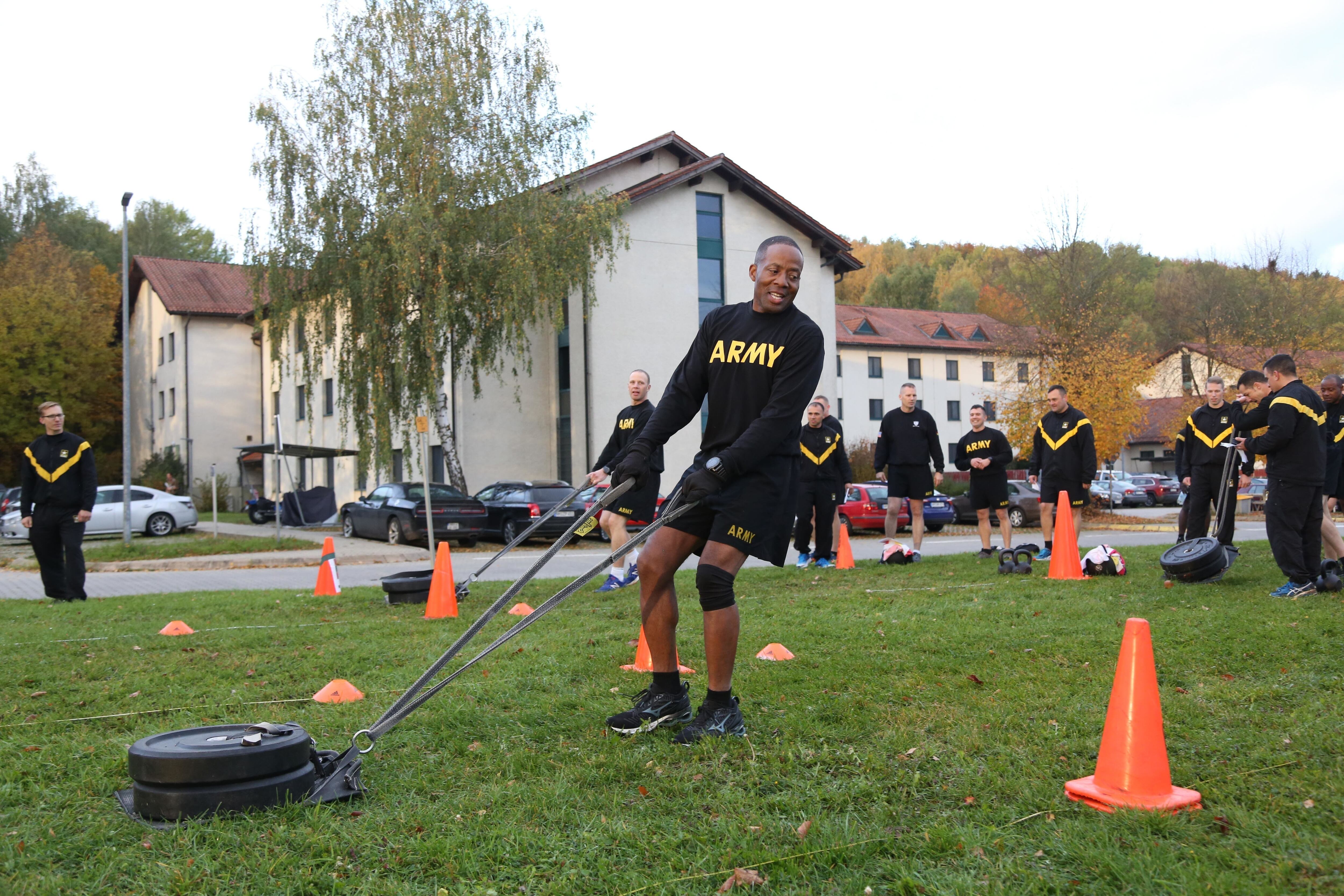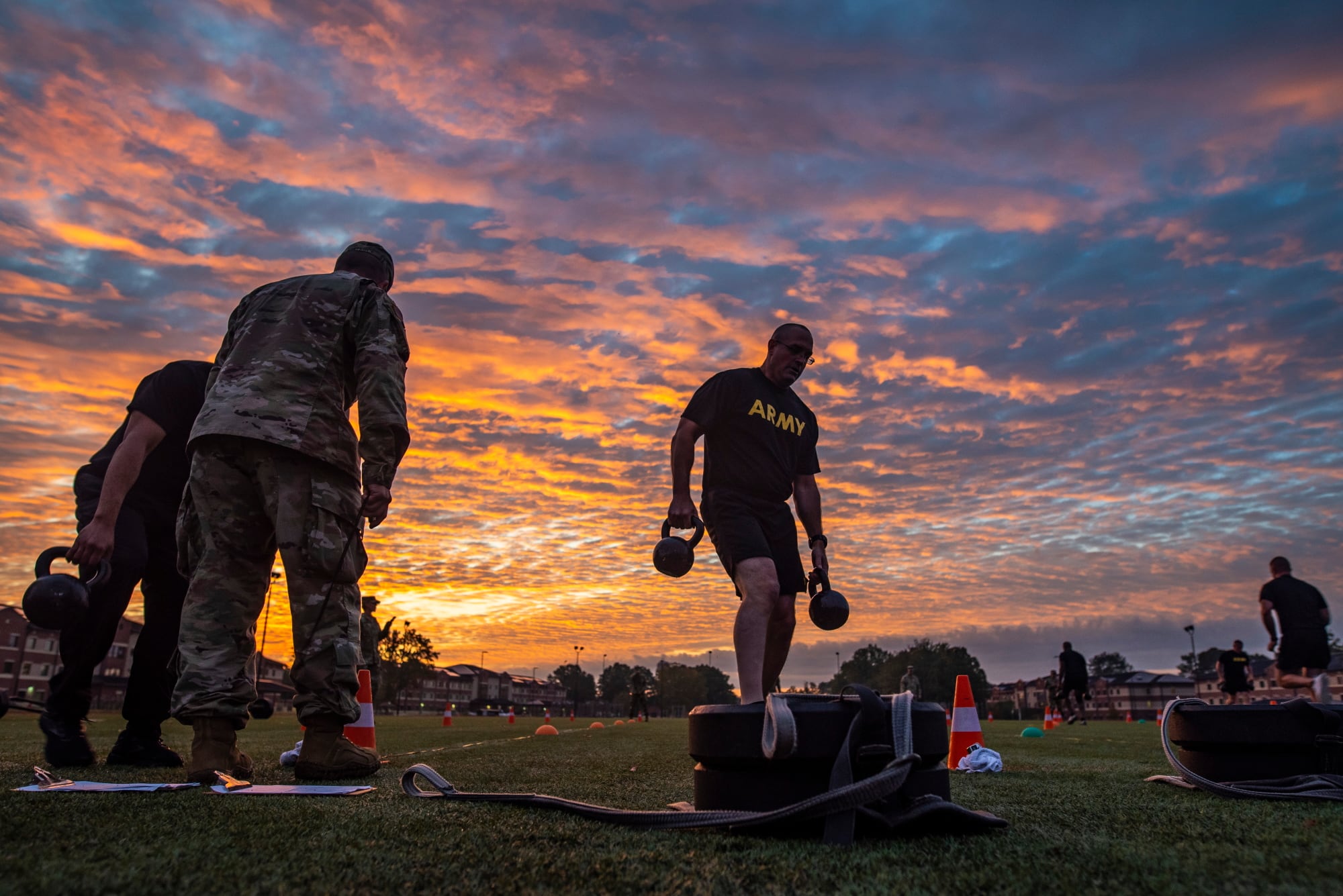A total of 340 pounds.
This is the weight that a soldier must deadlift to earn 100 points on the maximum deadlift ACFT event. Is this an attainable goal for a soldier who weighs 110 pounds? What about a 13.5 meter power throw? Is this an attainable goal for a 5-foot-3 Soldier?
As the Army continues to navigate challenges to fully implement its new physical fitness test, measuring soldiers’ individual levels of fitness is no longer at the forefront. Using the current ACFT grading scale a small 110-pound soldier could deadlift the same 170 pounds as a soldier weighing 170 pounds and earn the same score. Are these two soldiers equally fit? One could argue that the ACFT sets larger individuals up for success, while it remains an uphill battle for smaller individuals, regardless of their fitness level.
We wrote this article because we believe that the Army needs a scoring system that assesses minimal combat readiness while rewarding individual fitness.
If the Army wants to continue to score soldiers based on body weight capability and not fitness level, then the Army has accomplished its objective with its potential new evaluation system. According to an Army.mil article on March 22, 2021, “the potential new evaluation system may have five performance categories: green, bronze, silver, gold, and platinum. The categories will be developed based on ACFT performance by male and female soldiers.”
We can do better! The new scoring system needs to be normalized by body weight and scored based on physiological gender differences.

Our goal is to offer some thoughts to move us closer to an effective solution to the ACFT scoring system. The Army needs a scoring system that is chartable and easily calculated. The Army needs a scoring system that motivates soldiers to improve their fitness level through attainable goals.
The friction begins with the ACFT’s resistance exercises: the 3-Rep Maximum Deadlift, the Standing Power Throw and the Sprint-Drag-Carry events. The Army requires a soldier weighing 110 pounds to deadlift a minimum of 140 pounds to score 60 points on the ACFT. The Army requires the same minimum standard for a soldier that weighs 170 pounds. While both soldiers pass the event, the scores fail to provide soldiers and leaders at all levels with insight into individual fitness. Under the current system, there is little motivation for a 110-pound soldier to max the deadlift given the current scoring scale. That’s over three times the soldier’s body weight. To put that performance into perspective, 340 pounds is only 30 pounds short of world record-tying 370 pounds for a 110-pound female at a one max repetition. Keep in mind, the Army asks for three repetitions at 340lbs for 100 points!
A common notion is “mass moves mass.” But how do we know which soldiers are pound-for-pound more fit? In the deadlift scenario, it appears that the 110-pound soldier is more fit, as that individual deadlifted 30 pounds more than their body weight. The heavier soldier receives a higher score, but only lifts their body weight. Something is amiss and seems unfair when leaders “rack and stack” based on the current evaluation system.
Our solution is a scoring system that accounts for both combat requirements and individual fitness levels. We propose splitting the resistance exercises’ 100 points into two categories: Combat Requirements and Individual Fitness Assessment. That method would allocate a portion of the 100 points toward combat readiness and a portion to a soldier’s Performance to Weight Ratio (PWR).
The PWR is a coined term that describes the ratio of a raw measure and a weight. Mathematically, the PWR divides the soldier’s weight lifted, distance thrown or time-to-complete by the soldier’s weight. We believe the result is a fair assessment that addresses combat readiness and individual performance.

The combat requirement score would be awarded as pass/fail. Soldiers should receive all points (50 points) for lifting a minimum required weight, or no points for failing to achieve the minimum standard. Soldiers would be awarded the remaining number of points (50) based on individual fitness. We recommend that aggregate ACFT data is used when determining fitness level percentiles which will result in points awarded for individual fitness. For purposes of our MDL example, we used the fitness industry’s Strength-to-Weight Ratio standards to award individual fitness level points.
The deadlift’s PWR scoring works as follows when comparing the fitness performance of the 110-pound soldier to the 170-pound soldier who both successfully complete the three-repetition deadlift at 170 pounds. Under the current scoring system, both score a 64/100. Our proposed scoring system awards 50 points for achieving the basic Army requirement of deadlifting 140 pounds, then distributes the remaining 50 points based on this proposed score chart.
RELATED
Proposed ACFT Scorecard
In practice, a female, 110-pound solider with a MDL PWR of 1.3 now earns a score of 88 while the 170-pound female soldier with a MDL PWR of 1 earns a 73. Of course, this is just an example, but these scores are fair, pass the common-sense test and should, at the very least, be based on gender. Similar PWRs should be used for the Standing Power Throw and Sprint-Drag-Carry events.
Because of the score above, units can fairly “rack and stack” based more on fitness and less on the impact that a soldier’s weight has on ACFT’s weighted exercises. The new proposed score reflects readiness and individual fitness. In addition, soldiers may be more motivated to improve individual fitness by feasibly attaining a higher PWR on resistance exercises compared to the current ‘one scale fits all sizes’ ACFT standards.
Lt. Col. Robert Craig is an Army infantry officer and operational analyst. He is a Level II CrossFit certified instructor and has been coaching functional fitness in military and civilian gyms since 2008. His operational assignments include platoon leader, company commander and combat analyst. His deployments include Operation Desert Storm, Operation Iris Gold, Operation Enduring Freedom and Operation Iraqi Freedom. He holds master’s degrees in civil engineering and operations research.
Maj. Maria Smith is an Army finance and comptroller officer. Her operational assignments include detachment executive officer, brigade budget analyst, and detachment commander. She holds a master’s degree in applied mathematics and is currently conducting research on body composition and the ACFT.
Capt. Shane Smith is an Army engineer officer and fitness enthusiast. His operational assignments include platoon leader, company executive officer, brigade assistant operations officer, and company commander. He holds a master’s degree in applied mathematics.
The views expressed herein are those of the authors and do not reflect the position of the U.S. Military Academy, the Department of the Army, or the Department of Defense.




